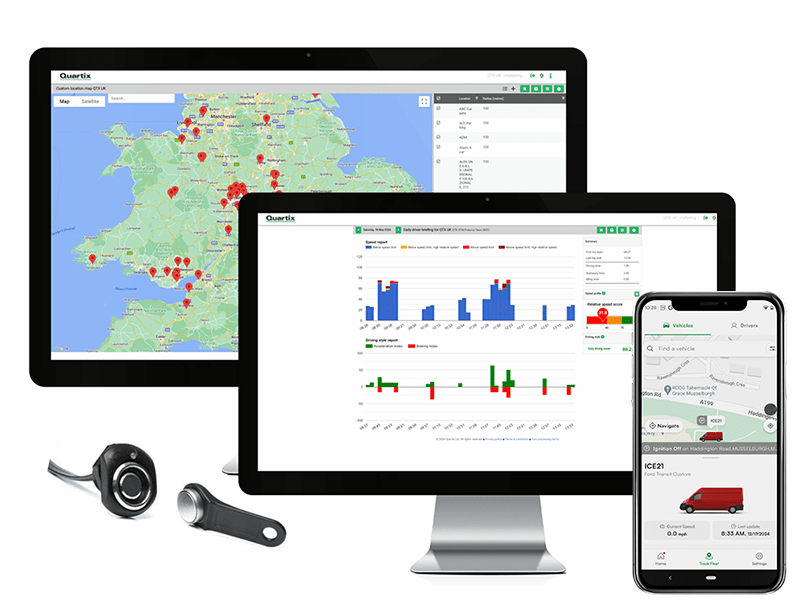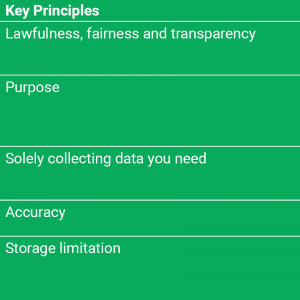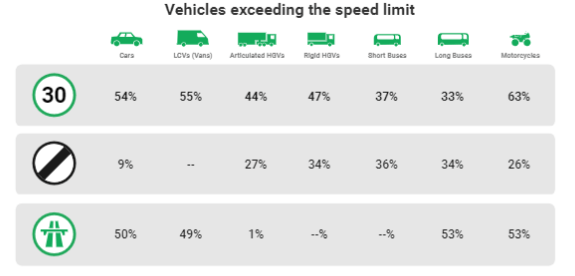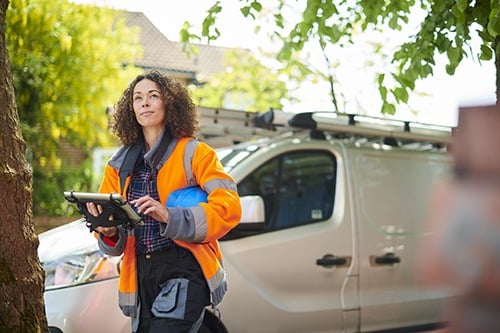See for yourself how Quartix works with our fully interactive real-time demo.
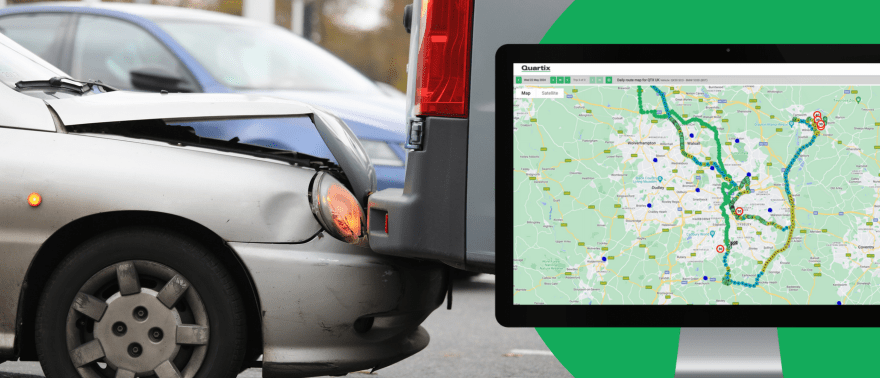
Accidents are an unfortunate reality for businesses that rely on vehicles, whether you manage a small company fleet or a nationwide logistics operation. But how you respond to them can make all the difference for everyone involved. A well-handled collision investigation can:
- Resolve insurance claims faster
- Protect drivers from false liability
- Uncover the real cause of the accident
- Prevent similar incidents in the future
Gone are the days of relying on witness statements, damage reports, and driver recollections. Today, businesses have powerful tools like vehicle tracking systems, dashcams and driver ID, to provide clear, objective evidence in accident investigations.
Here’s how vehicle tracking technology and other telematics tools can protect your fleet and improve road safety.
Protect Your Business in Collision Disputes
Accident disputes can be costly and time-consuming. If your company driver is wrongly blamed, proving their innocence can be difficult – unless you have telematics data to back it up.
Example scenario: Your company vehicle is involved in a side-impact collision at a junction. The other party claims your driver ran a red light. Telematics data, combined with GPS timestamps, can prove the vehicle was traveling within the speed limit and had stopped at the junction before impact. This type of evidence can be crucial in legal cases and insurance claims, not only for your staff but for your business too.
What Crash Data Does a Vehicle Tracking System Record?
Vehicle tracking technology provides second-by-second data leading up to an accident. Let’s look at the key data points that vehicle tracking systems capture before, during, and after a crash:
- Location & time stamp: Where and when the accident happened.
- Vehicle speed: How fast the vehicle was traveling before impact.
- Braking & acceleration: Whether the driver attempted to avoid the crash.
- Impact force & direction: Helps assess severity of the collision and liability.
Vehicle tracking data eliminates speculation and gives a clear, factual account of what happened.
Capture Visual Evidence with Dashcams
Even with telematics, some questions might remain unanswered after a crash:
- What happened on the road ahead?
- What was the other vehicle doing?
- Was your driver distracted or alert?
Commercial dashcams can solve this problem by providing clear, unbiased video footage of both the road and the driver’s actions inside the vehicle.
Example scenario: Your driver is accused of running a red light and causing an accident. Telematics shows they slowed down, but the dashcam footage confirms the light was still green when they crossed the intersection – clearing them of this accusation.
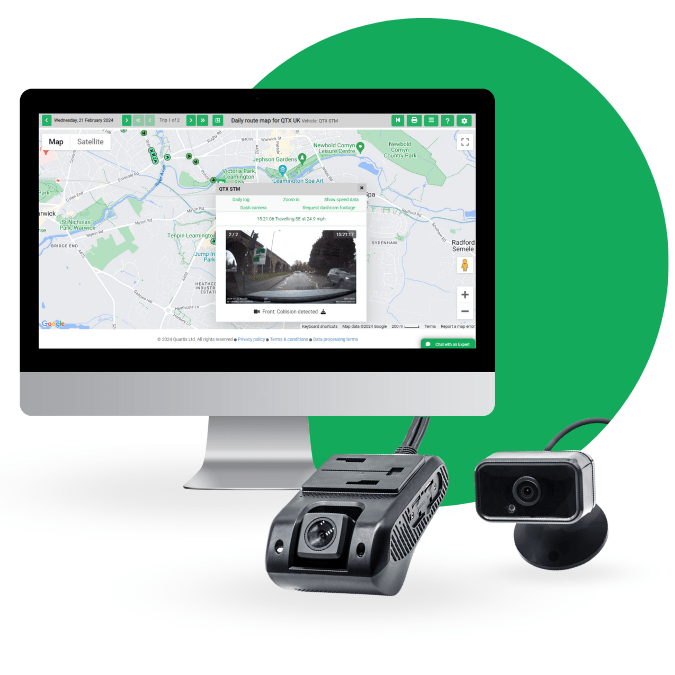
How dashcams improve accident investigations:
- Front-facing cameras capture the events that unfold on the road ahead, proving fault in collisions, recording reckless drivers, and verifying witness statements.
- Rear-facing cameras capture footage of the road behind, providing further detail of what happens around the vehicle and proof in the event of tailgating behaviour.
- Driver-facing cameras show whether your driver was alert, distracted, or following safety protocols.
- AI-powered dashcams detect risky driving behaviours (e.g., mobile phone use or drowsiness) and can alert your drivers in real time.
Tip: Use dual-facing dashcams for maximum protection – capturing both road events and driver behaviour. Connected dashcams will flag recordings and make them available in your fleet tracking system, mapping footage against journey details, providing rich context.
Real-Time Crash Detection Technology for Faster FNOL
Real-time crash detection technology is available with some dashcam solutions, alerting you the moment a collision occurs, so you can send help and deal with the matter immediately. Another benefit of collision detection is faster First Notification of Loss (FNOL) – the first report of an incident to an insurance provider. We’ll cover more on this shortly.
How dashcam real-time crash detection works:
- Sudden impact is detected in real time.
- Instant alerts notify managers the moment a crash occurs.
- Second-by-second reporting captures speed, braking, and impact forces leading up to the event.
- Precise GPS tracking confirms the exact location of the crash.
The benefit for businesses
- Faster Emergency Response: If a collision happens, you can immediately contact emergency services, improving driver safety.
- Quick Incident Documentation: Instead of waiting for a driver report, you get real-time crash notifications and data.
- Accurate Liability Assessment: You can assess fault faster with second-by-second impact analysis.
Why a fast FNOL matters
If your commercial dashcams are equipped with crash detection, you can give FNOL to your insurance provider faster. Providing the details of the incident straight away minimises risk of details being blown out of proportion by the other party and allows your insurer to quickly assess what is covered in your policy and start the claims process.
Example scenario (Faster FNOL in Action): Your fleet van is rear-ended on a busy motorway. Real-time crash detection instantly alerts the fleet manager with the exact location of the crash, impact severity data, driver ID confirmation and dashcam footage showing the incident. Emergency services are dispatched immediately, the insurer is notified, and liability is assessed using real-time data. Dashcam footage proves the other driver was at fault, protecting the company from false claims. Without FNOL, reporting delays could have slowed response times and complicated claims – increasing stress for the company and the driver, and the time the vehicle is left out of action.
Tip: Ensure your commercial dashcam solution includes crash detection to improve emergency response times, achieve faster FNOL, and streamline accident reporting.
Incident Reporting Apps for Drivers
Some telematics systems integrate with vehicle checks and incident reporting apps that you can give to your drivers. This means that if they spot a defect with the vehicle, or are involved in a collision, they can submit all the relevant information with photo evidence straight to your vehicle tracking system via the mobile app.
Tip: See Quartix Check – our Vehicle Inspections & Incident Reporting App
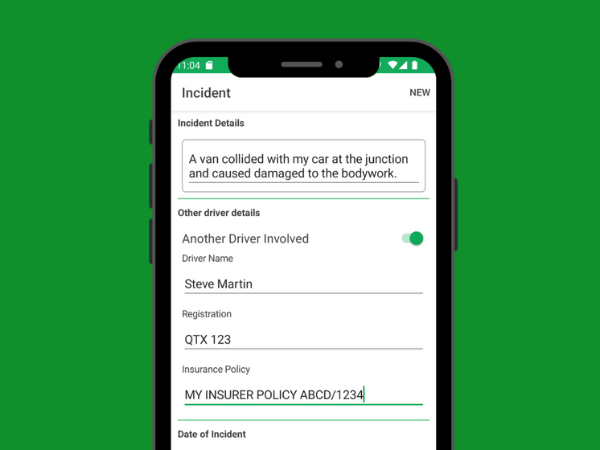
Identify Who Was Driving with Driver ID
Many businesses use pooled vehicles – meaning multiple employees share the same car, van, or truck. In the event of a collision or insurance claim, identifying the driver is crucial. Cue Driver ID key fobs.
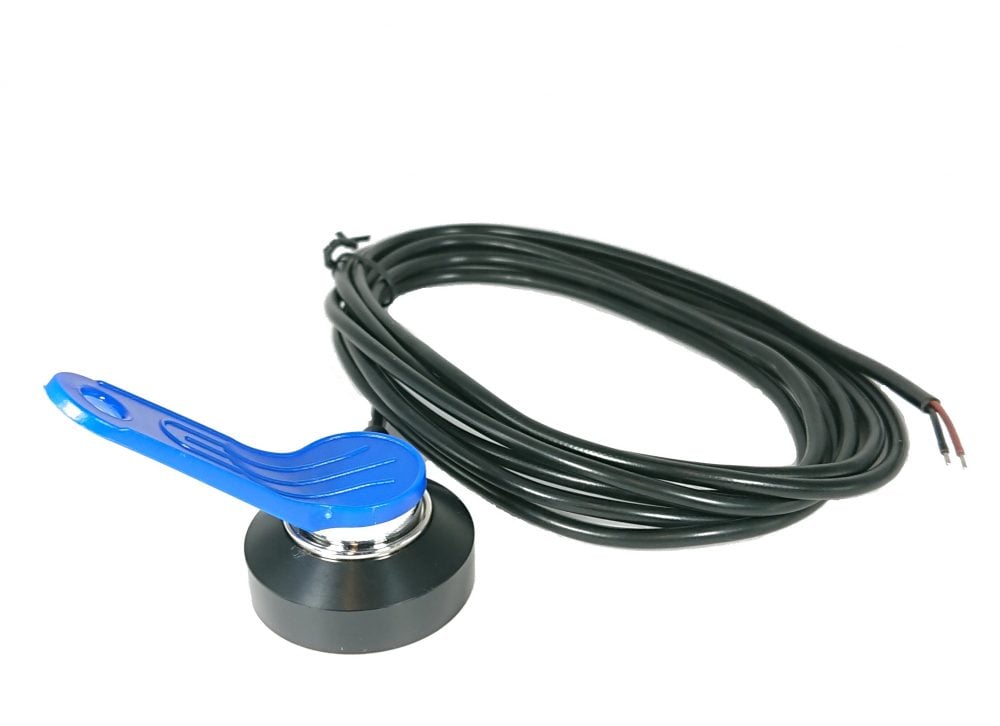
How Driver ID helps:
- Key fobs or RFID cards ensure that every trip is assigned to a specific driver.
- Eliminates disputes over who was behind the wheel at the time of an incident.
- Tracks individual driving behaviour so risk patterns can be identified early.
Example scenario: A company van is reported to have hit a parked car, but multiple employees use the vehicle throughout the day. With Driver ID, you can see who the assigned driver was at any point in time, making the investigation faster and more accurate.
Resolve Claims Faster and Protect Against Fraud
Insurance claims and legal disputes can drag on for months without solid evidence. Vehicle tracking systems and dashcams provide the hard data insurers need to speed up the claims process for your business and reduce fraudulent pay-outs.
How vehicle tracking helps resolve disputes:
- Provides objective evidence to counter false claims.
- Prevents “crash-for-cash” scams where fraudsters stage accidents.
- Speeds up claim processing by providing clear data to insurers.
Example scenario: A third-party driver claims your employee drove into the back of them, but your telematics data shows your driver had stopped at the point of impact and dashcam footage shows they actually reversed into your vehicle intentionally. And just like that, your company is easily protected from taking financial liability for a fraudulent claim.
Identify Trends to Prevent Future Accidents
Accident investigation isn’t just about what happened – it’s also about why it happened and how to prevent it from occurring again. By analysing collision data from your vehicle tracking system, you can spot trends in driver behaviour.
Common insights from telematics accident reports:
- Frequent harsh braking – Could indicate tailgating or distracted driving.
- Regular speeding violations – Raises risk of serious collisions.
- Repeated incidents at certain locations – Suggests hazardous routes or poor road conditions.
Tip: Use this data to create targeted driver safety programs. Address high-risk behaviours with coaching and training.
How to use accident data for incident prevention:
- Review telematics reports to spot patterns (e.g., harsh braking, speeding, frequent near-misses).
- Adjust policies based on common risk factors (e.g., speeding policies, requiring rest breaks for long shifts).
- Reward safe drivers who consistently demonstrate good habits. See our guide to encouraging driver behaviour improvements across teams.
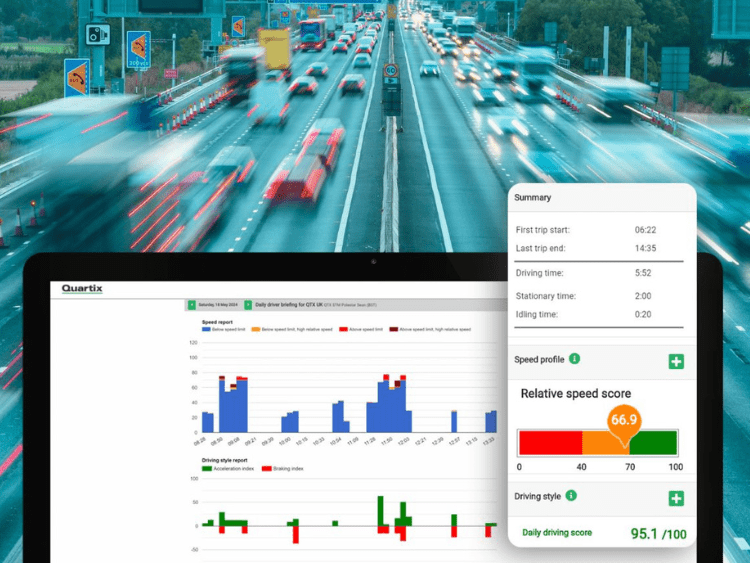
A Data-Driven Approach to Fleet Safety
Once you’ve investigated an accident, the next step is ensuring it doesn’t happen again. Here’s how to use telematics insights to proactively improve fleet safety:
- Monitor Risky Driving Behaviour – Address frequent speeding, harsh braking, or sudden acceleration.
- Recognise Safe Drivers – Reward good driving behaviour to encourage best practices. See our guide here.
- Regularly Review Fleet Reports – Identify at-risk drivers and provide additional training where needed.
- Prioritise Driver Wellbeing – Hear Mark Cartwright, Head of Commercial Vehicle Incident Prevention at National Highways talk on the importance of driver health and ‘road-worthiness’ in our Fleet Insider podcast episode.
Learn more about crash detection in our “It’s so important to know what’s going on with each driver and to know the pressures they are under. If someone has a new baby, they’re likely to be getting fatigued and that can be dangerous. It’s important to engage with drivers’ on health issues too, especially around certain age demographics.”
Accident investigations don’t have to be slow, complicated, or based on assumptions. By combining telematics, dashcams, and driver ID systems, you can create a fast, accurate, and fair process for handling collisions.
Key Takeaways:
- Telematics data can provide second-by-second crash reports.
- Driver ID confirms who was driving shared vehicles.
- Dashcams capture real-world evidence of what happened.
- Insurance claims are resolved faster with evidence.
- Fleet safety improves when accident data is used proactively.
Using vehicle tracking to investigate accident data doesn’t just resolve crashes faster – it actively prevents them. Implementing telematics is one of the most effective ways to protect your drivers, your vehicles, and your bottom line.
Don’t wait for an incident to take action. See how vehicle tracking can transform your fleet’s safety and efficiency today. Book your free demo or get a personalised quote.
